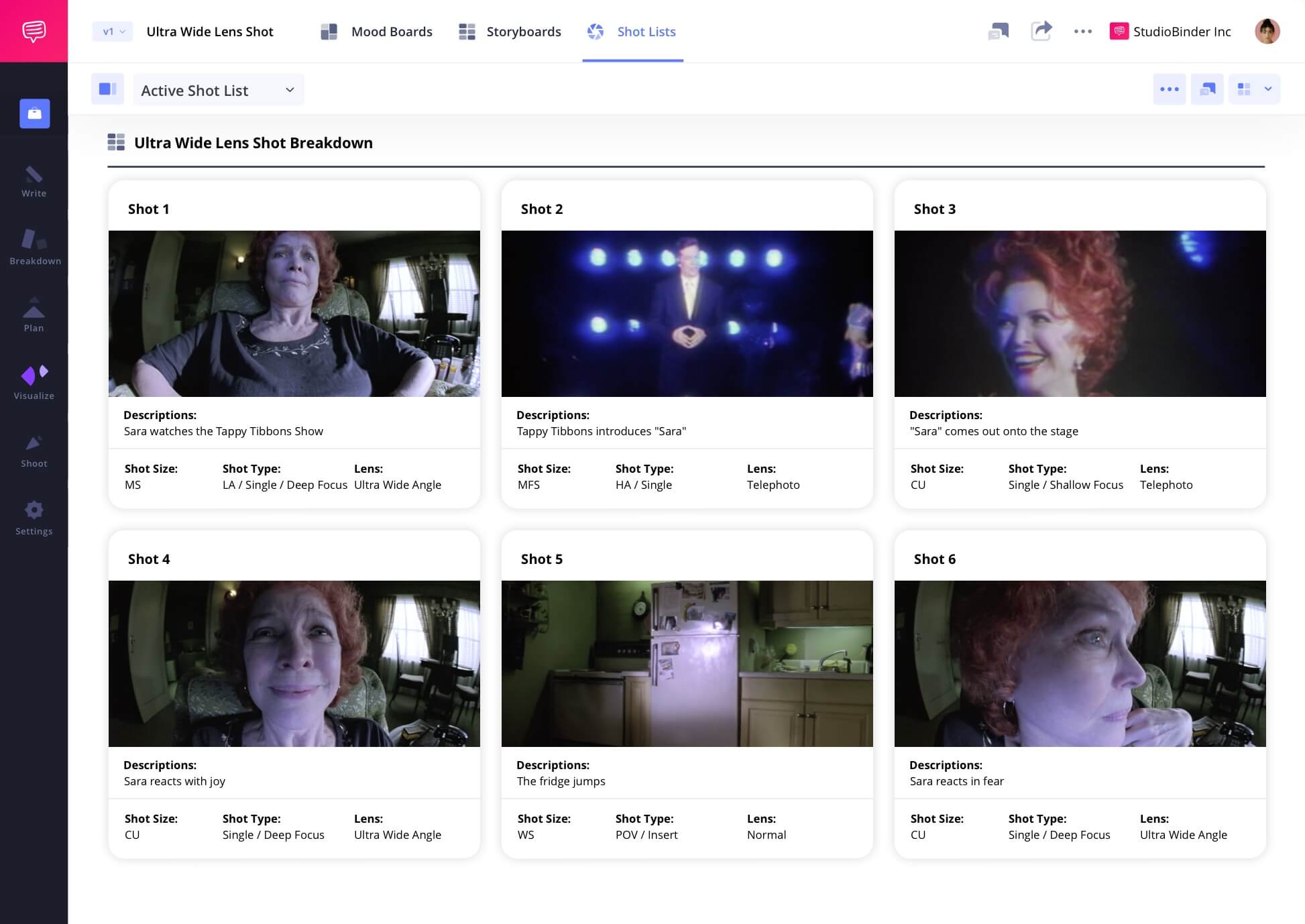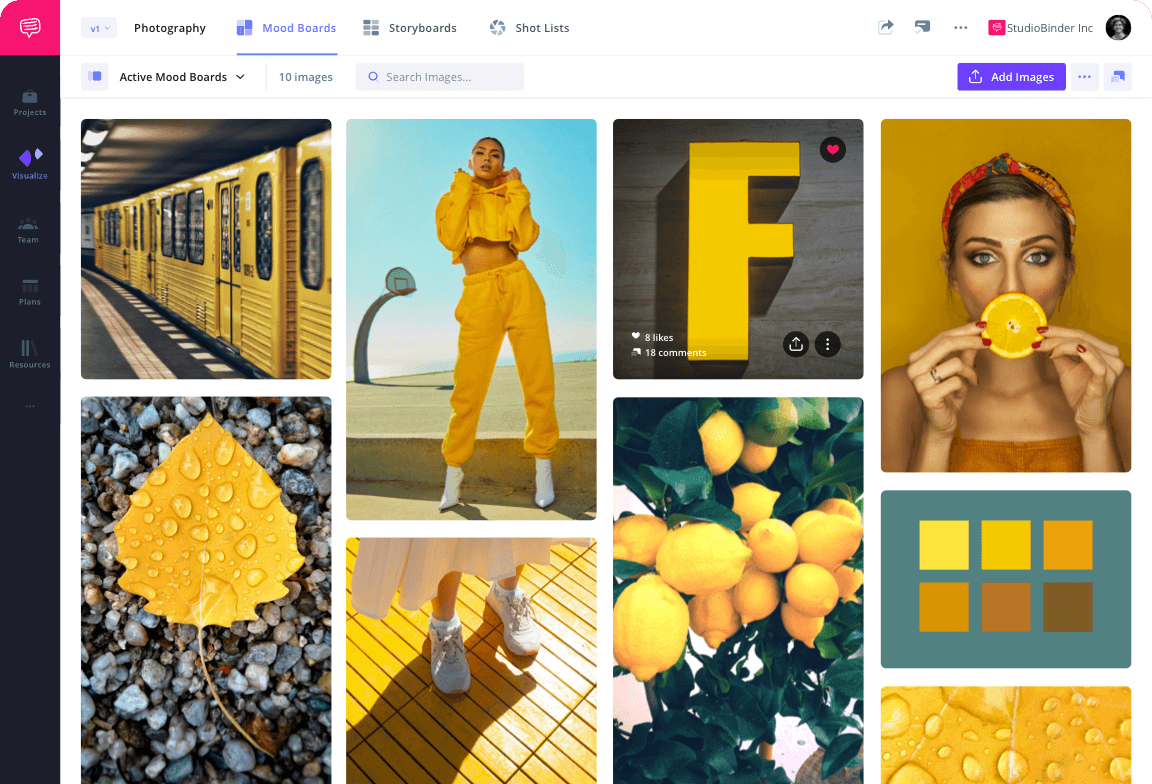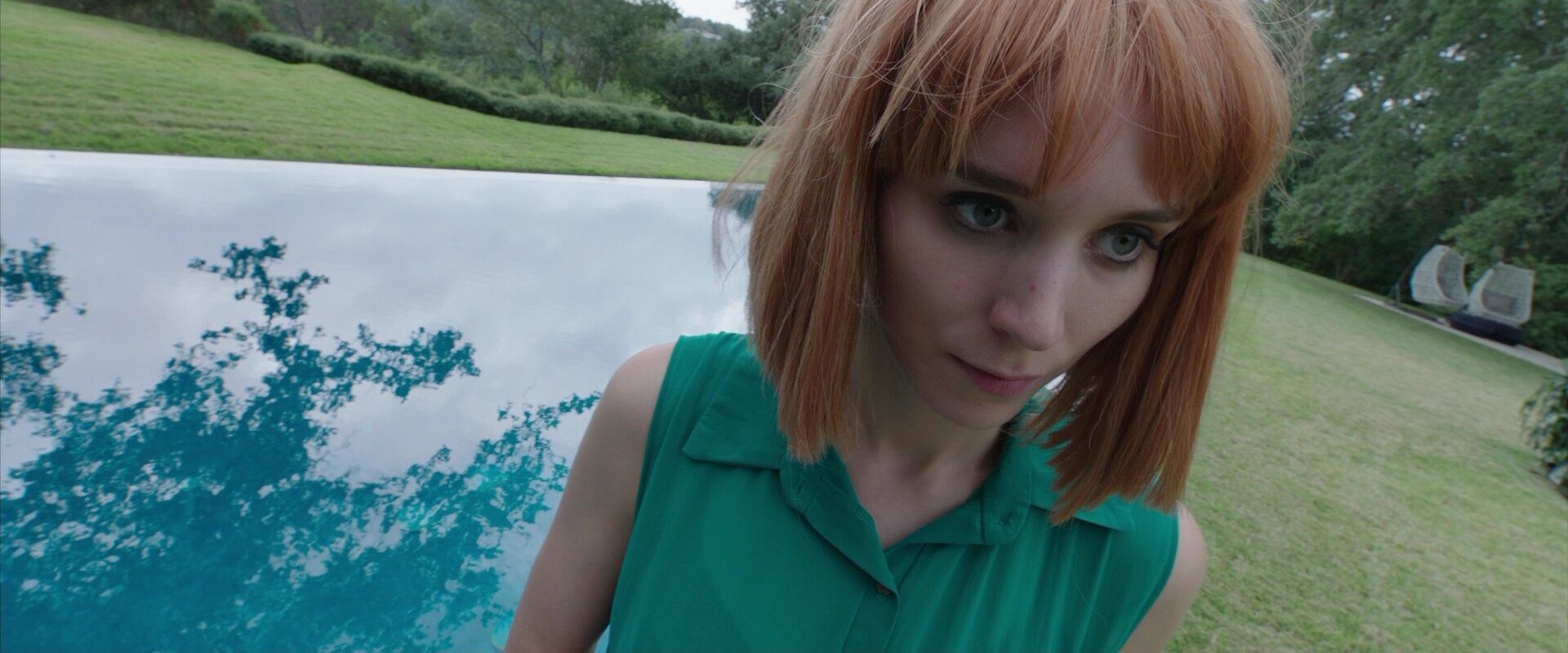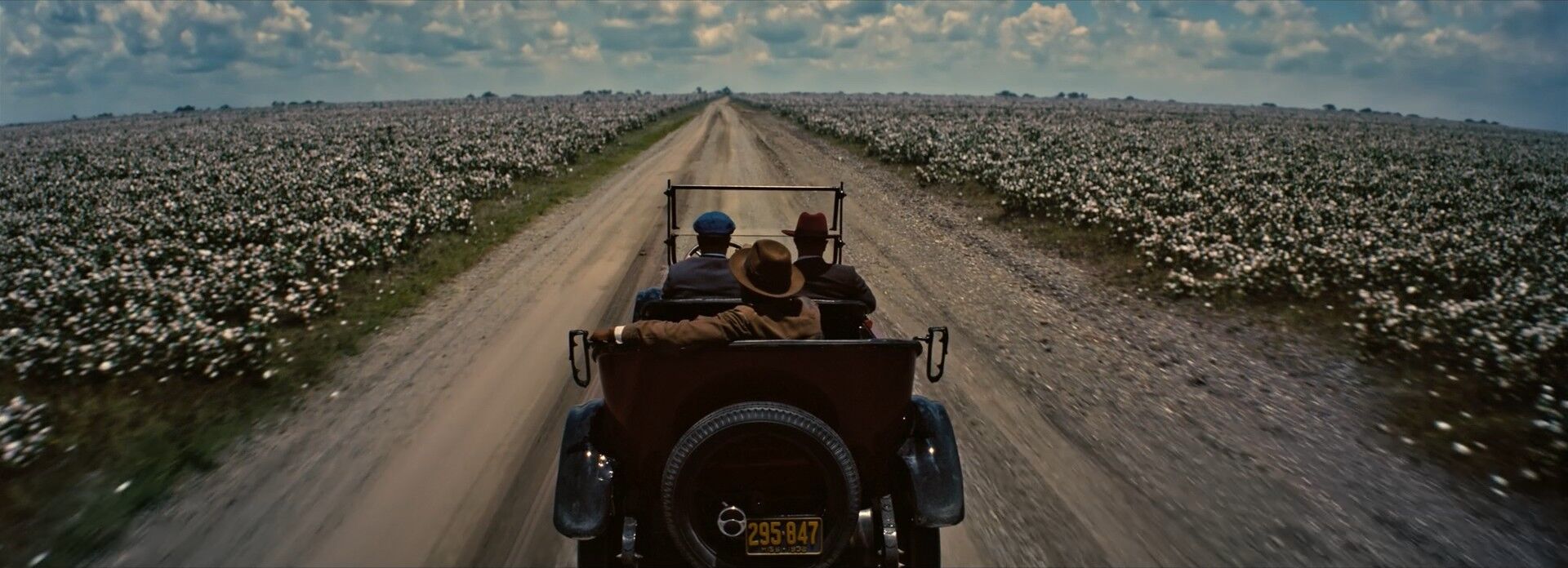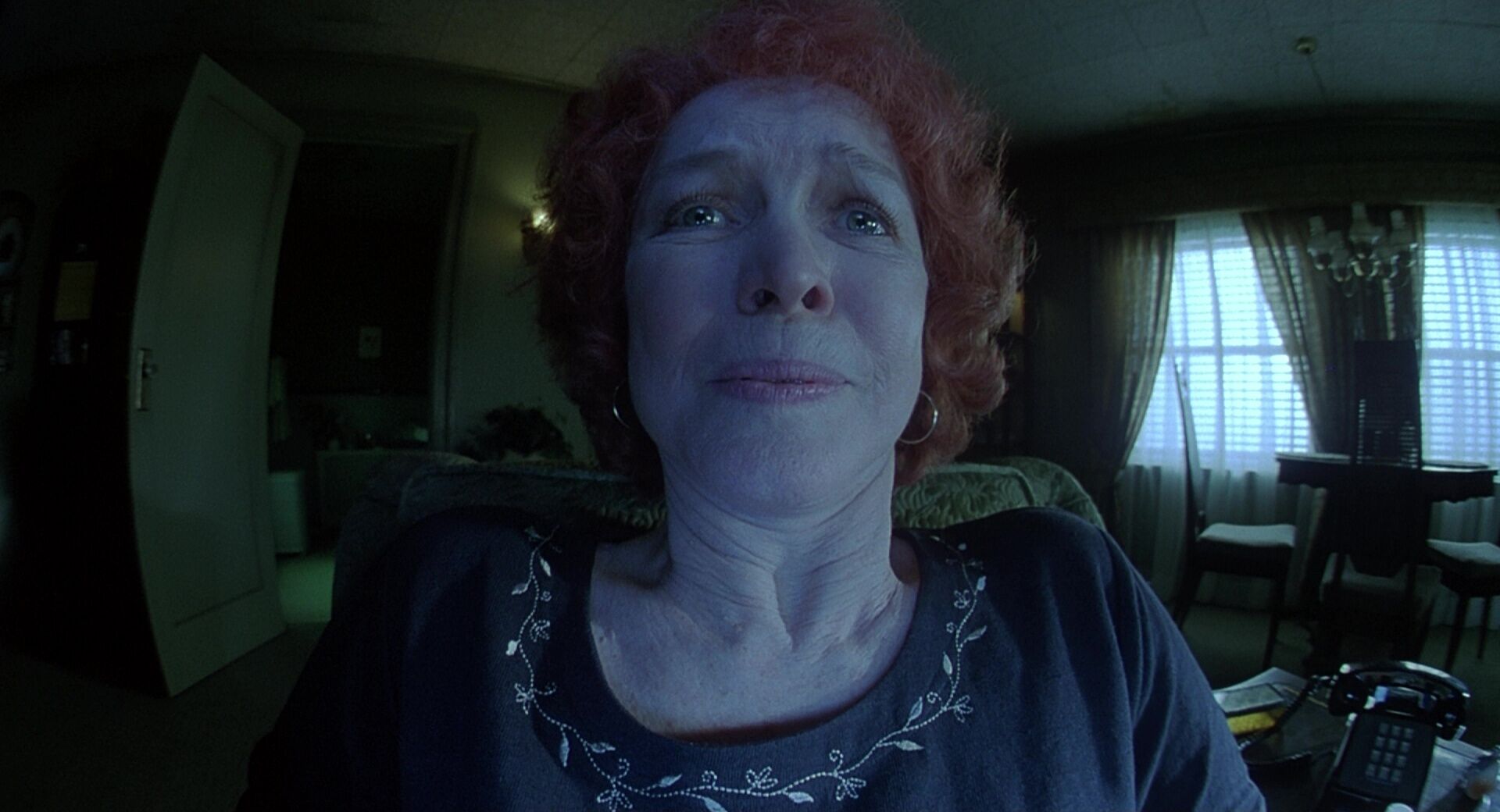home → Camera Lenses → Ultra Wide Angle Lens
ULTRA WIDE ANGLE LENS SHOT DEFINITION
What is an Ultra Wide Angle Lens Shot?
An ultra wide angle lens shot is a shot in filmmaking that uses a type of wide angle lens with a focal length of anywhere between 18mm and 24mm. While a typical wide angle lens significantly expands the field of view of an image, an ultra wide angle lens takes it a step further, allowing filmmakers to fit even more of an environment and/or subject into the frame of their shot.
For further help understanding this technique, check out our full guide to the ultra wide angle lens shot, with even more examples and breakdowns.
TYPES OF ULTRA WIDE LENS SHOTS
Ultra Wide Angle Lens Shot Examples
Before we take a more detailed view of how ultra wide angle shots are used to punch up visual storytelling, we’ll first take a look at some visual samples to get acquainted with their general purpose. Browse this curated selection of ultra wide angle lens shots in film to get started.
Expands narrative worlds
Bolsters character close ups
Enlarges interior settings
Emphasizes physical presence
Uses
What does an ultra wide angle lens shot do?
The ultra wide angle lens is essentially used for shots when a basic wide angle lens just can’t quite capture the vastness a moment calls for. Still, the ultra wide angle lens doesn’t aim to expand an image to the point of drawing too much attention to a shot’s overly wide focal length, instead it aims to intensify or even slightly distort the scene without drawing too much attention to the filmmaker’s hand.
Immersion
With its ability to capture so much of an environment within the frame, an ultra wide angle lens can impart the feeling of being inside the character's world.
Action
An ultra wide angle lens can make a fight scene feel more realistic and enveloping, allowing us to experience movement with an almost discomforting closeness.
Scene Establishment
Before jumping into the action and/or drama of a scene, an ultra wide angle lens establishing shot can help pronounce vast exteriors or interiors.
POV
If a character is experiencing extreme panic, or even extreme euphoria, using an ultra wide angle lens helps impart extreme sights and senses.
Qualities
Wide Angle Lens vs Ultra Wide Angle Lens
We’ve touched on wide angle lenses somewhat so far, but let’s identify their exact difference from the ultra wide angle lens. A wide angle lens shot encapsulates a focal length of 24mm to 35mm. Generally, a wide angle lens is the standard for fitting more of an environment into a shot without physically moving the camera.
The ultra wide angle lens’ 18mm to 24mm focal length is simply a further extension of a shot’s field of view, ramping up the immersive quality by a significant, but also not extremely exaggerated amount.
Fisheye Lens vs Ultra Wide Angle Lens
While both fisheye lenses and ultra wide angle lenses file under what some industry professionals label as an extreme wide angle lens, the difference between the two technical terms is still distinct, despite often getting overlapped when referenced. The fisheye lens stretches its focal length to the limit, generally around 8mm to 16mm, achieving a curvature of up to 180 degrees.
This allows the shot to take on a more abstract, unnatural perspective. Meanwhile, an ultra wide angle lens shot typically stretches the image right up to the line of abstract and blatant distortion.
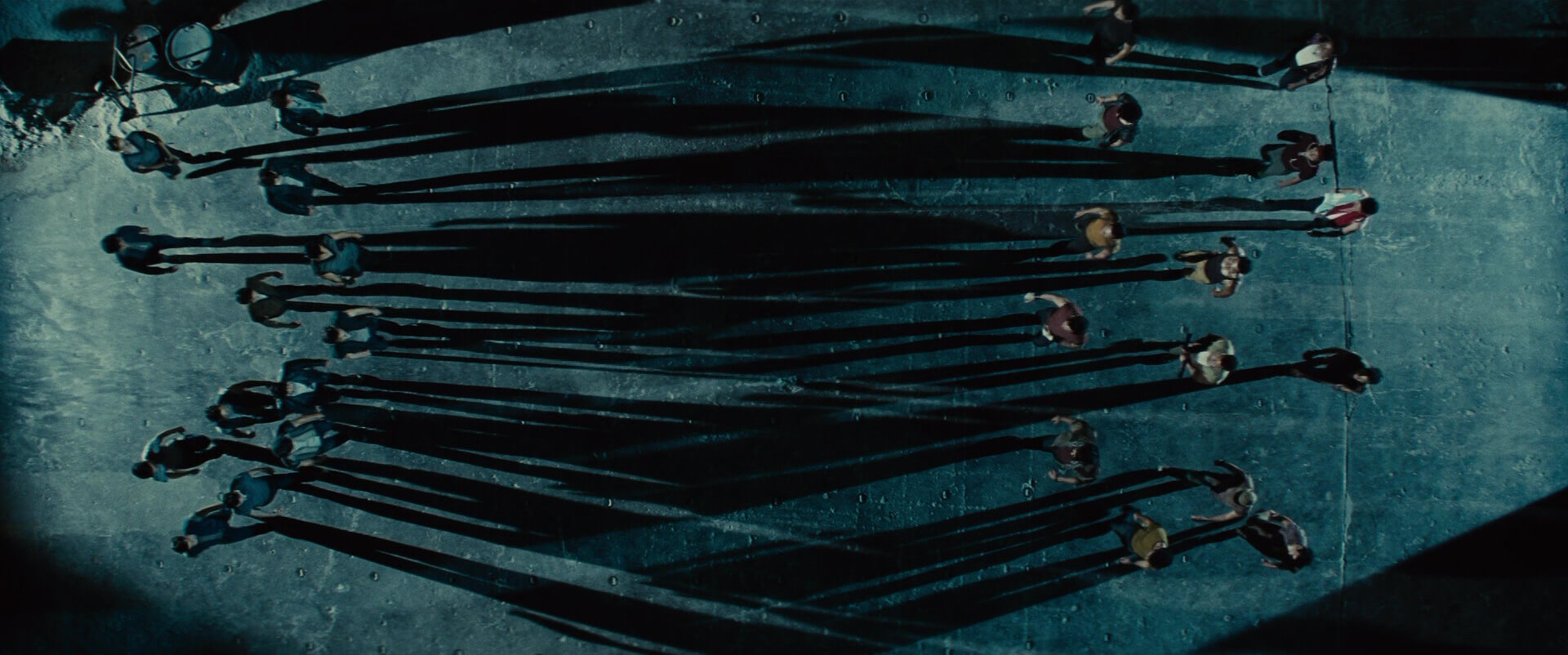
Case Study
Ultra wide angle lens in a shot list
Now let’s see how an ultra wide angle lens can help accentuate the themes and ideas of an experienced filmmaker’s work. In Requiem for a Dream, director Darren Aronofsky uses many ultra wide angle lens shots to emphasize his characters’ distorted sense of self and her growing paranoia as her addiction pulls her deeper.
Click the shot list below for a beat-by-beat look, and ask yourself how and why this ultra wide angle lens shot brings both character and environment to the forefront.
The ultra wide angle lens shot has an unending well of meaning it can imply, it requires only a passionate and creative hand to guide it.
Next, let’s further explore the ultra wide angle lens shot’s capabilities by getting a taste of what happens when it’s combined with some alternative shot approaches.
Unexpected Crossovers
How can you pair an ultra wide angle lens shot with other camera techniques?
How to combine an ultra wide angle lens shot
An ultra wide angle lens is a useful tool for any filmmaker to keep by their side. But pondering when to use it to the best of its ability also means considering what other creative applications it could be paired with. Which brings us to this list of innovative filmmaking combinations worth taking into account:
- Dutch Angle: An ultra wide angle lens can magnify the sense of surreal unease a Dutch angle inherently provides.
- Handheld: For hyper-tense, hyper-realistic action sequences, a handheld approach with an ultra wide camera lens can skyrocket the chaos.
- Close Up: A close up shot on a character’s face with an ultra wide angle lens can immerse an audience in that character’s mental state, capturing even the smallest of micro expressions.
- Whip Pan: During a whip pan shot, the ultra wide angle lens further expands the colorful blur effect, heightening the movement’s jarring energy.
- Crane: For a sweeping shot of heroes bolting into battle, the crane’s quick ascension with an ultra wide angle lens will elicit that larger-than-life feeling.
- High Angle: A high angle shot of a character with an ultra wide angle lens can make that character feel like they’re being swallowed by their surroundings.
- Low Angle: A low angle shot of a character with an ultra wide angle lens can aggressively amp up the character’s scale and intimidation. Fitting for a villainous reveal.
Frequently asked questions about the ultra wide angle lens shot
An ultra wide angle lens shot greatly extends the field of view of a shot. Rather than moving the camera back to capture more of an image, this lens manages to fit more of an environment into a frame.
In simplest terms, use a wide angle lens when you want the audience to feel as though they are immersed in a scene, without necessarily drawing their attention to how ‘different’ the shot feels.
Creating an ultra wide angle lens shot is simple, technically only requiring a camera lens with a focal length of roughly 18mm and 24mm inserted into the camera to be achieved.

